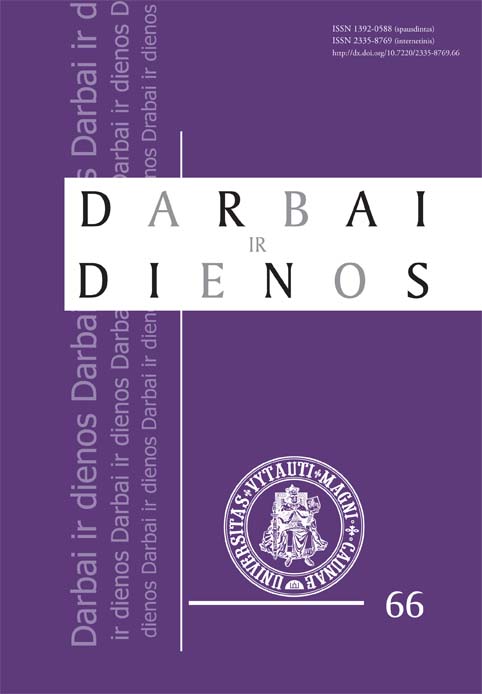Rhetoric, Liberties, and Classical Culture from Free Speech (“Parrhesia”) to Serio-comic (“Spoudogeloion”) in Lucian of Samosata
Rhetoric, Liberties, and Classical Culture from Free Speech (“Parrhesia”) to Serio-comic (“Spoudogeloion”) in Lucian of Samosata
Author(s): Michel BriandSubject(s): Language studies, Language and Literature Studies, Theoretical Linguistics, Studies of Literature, Ancient Philosphy, Theory of Communication
Published by: Vytauto Didžiojo Universitetas
Keywords: Freedom of speech; Postmodernity; Parrhesia; Auto-fiction; Meta-fiction; Serio-comic; Scepticism; Lucian of Samosata; Satirical dialogue; Authorship/readership; Classical culture; Critical thought;
Summary/Abstract: This paper extends a recently published preface (in Lageot & Marchadier F. (dir.), Le blasphčme dans une société démocratique. Paris: Dalloz, 2016). In the polymorphous and paradoxical works of Lucian of Samosata, “the ancient Voltaire,” I propose to focus on some rhetorical devices which intensely perform and stage the freedom of speech denoted by the Greek notion of parrhesia, as M. Foucault reappraised it, in a cultural and political perspective (Foucault M. Le courage de la vérité. Le gouvernement de soi et des autres II (Cours au Collčge de France, 1984). Paris: Gallimard/Le Seuil, 2009). For instance, in The Dead Come to Life or The Fisherman and Philosophies for Sale, or Zeus Rants, Lucian stretches and articulates sophistic and true (or false) philosophy, Socratic dialogue and comedy, epideixis and dialectics, by renewing, hybridizing or inventing genres and registers which still inspire contemporary critical theory, as well as a significant part of post-modern creations. As he applies a pragmatic conception of thought, which is not reluctant to use satire, allegorical fiction, and polemical or fantastic discourse, Lucian may become an important reference for new rhetoric, as it both resists and produces new dynamic values, altogether practical and theoretical, or even, while facing discourses and images, is able to combine active, even critical and distanced, reception and sensitive immersion, and reflexivity or meta-fictionality. Four main enunciative strategies and processes have been scrutinized in this study: the interplays of rhetoric and false or true philosophy; the dynamics of hyperrealistic, fantastic, and specular auto-fiction, e.g., in Alexander the False Prophet, True Stories, The Dream or Lucian’s Carrier; the dialogic powers of serio-comic (spoudogeloion), between reflexion and comedy, e.g., in The Fly, Charon or the Inspectors, and the Dialogues of the Dead; and the dialectics of critical / immersive readership and meta-fictional / committed authorship, e.g., in Heracles, The Hall and About Dance.
Journal: Darbai ir dienos
- Issue Year: 2016
- Issue No: 66
- Page Range: 185-198
- Page Count: 14
- Language: English

